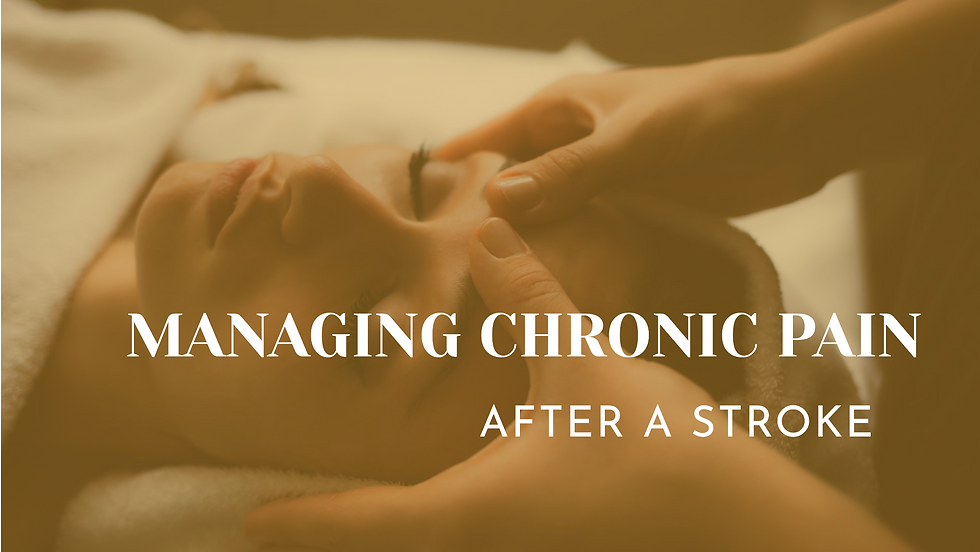Easing the Burden: Managing Chronic Pain After a Stroke
- Admin
- Apr 15, 2024
- 2 min read

Introduction: (www.youtube.com/kneetiegorungo)
Surviving a stroke is a monumental achievement, marked by relief and gratitude. However, for some, the journey towards recovery introduces a challenging companion: chronic pain. This persistent pain, known as post-stroke pain or central pain syndrome, can significantly hinder rehabilitation efforts and diminish the quality of life. It emerges as a complex consequence of stroke-induced changes in the brain's processing of pain signals. Addressing and managing this pain is crucial for enhancing recovery and improving the overall well-being of stroke survivors. This article explores effective strategies for managing chronic pain after a stroke, aiming to provide insights and hope for those navigating this difficult aspect of stroke recovery.
Understanding Post-Stroke Chronic Pain
Chronic pain after a stroke can manifest in various forms, including muscle stiffness, painful spasms, or a peculiar sensation of burning, aching, or prickling in areas affected by the stroke. The intensity and nature of the pain can fluctuate, often exacerbated by movement, temperature changes, or emotional stress. Recognizing the signs and communicating them effectively to healthcare providers is the first step in addressing post-stroke pain.
Multifaceted Pain Management Strategies
1. Medication: Pain relief medications, including over-the-counter analgesics, prescription painkillers, and anticonvulsants (for nerve pain), can be effective in managing chronic pain. Antidepressants are also prescribed in some cases to alleviate pain by altering neurotransmitter levels in the brain. It’s crucial to consult with a healthcare provider to determine the most appropriate medication regimen, considering potential side effects and interactions with other post-stroke treatments.
2. Physical Therapy: Engaging in tailored physical therapy can help alleviate pain by improving mobility, strength, and flexibility. Therapists may also employ techniques such as massage, heat therapy, or transcutaneous electrical nerve stimulation (TENS) to directly target areas of pain.
3. Occupational Therapy: Occupational therapists can assist stroke survivors in adapting to daily activities in ways that minimize pain and strain, promoting a more independent and fulfilling life despite chronic pain.
4. Psychological Support: Chronic pain is not solely a physical issue; it has profound psychological implications. Counselling or participation in support groups can help survivors cope with the emotional burden of chronic pain, offering strategies to manage stress, anxiety, and depression that often accompany long-term pain.
5. Alternative and Complementary Therapies: Many stroke survivors find relief through alternative therapies such as acupuncture, meditation, and yoga. These practices can help reduce stress and pain perception, although it's important to approach them as complementary to traditional medical treatments.
Conclusion:
Managing chronic pain after a stroke requires a comprehensive, personalized approach that addresses both the physical and psychological aspects of pain. Through a combination of medical treatments, therapy, and support, stroke survivors can find relief from pain and navigate the path to recovery with greater comfort and hope. Open communication with healthcare providers, alongside a willingness to explore various pain management strategies, is key to finding the most effective approach for each individual’s unique situation.
The domain www.dubaitelemedicine.com is for sale. Please contact us at www.kneetie.com
#KneeTie #Stroke #youtube/kneetiegorungo #DubaiTelemedicine























Commentaires